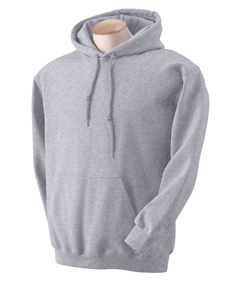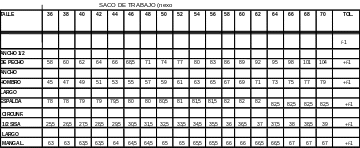UNIT 1 INITIAL ACTIVITIES CONTINENTS AND OCEANS
CHANGE OF COMMAND INITIAL CONTACT DATETIME OF CEREMONYINITIAL TRAIL PLANNING QUESTIONNAIRE ROAD BASED CYCLING
STUDY PARTICIPANT INITIALS HOSPITAL FOR SPECIAL SURGERY 535
!DOCTYPE HTML HTML HEAD META NAMEVIEWPORT CONTENTWIDTHDEVICEWIDTH INITIALSCALE10
!DOCTYPE HTML HTML CLASSAPPLESYSTEMFONTRESIZE LANGEN HEAD META CONTENTMINIMUMSCALE1 INITIALSCALE1
!doctype Html html headmeta Nameviewport Initialscale1 title 500
Uned 1 - Lle dwi’n byw
Unit 1 - Initial Activities
Continents and Oceans - Teachers Notes
These slides are suitable as a standalone lesson, or as part of the full unit of work.
There is a list of useful websites in the Attatchments within the Notebook file. There are numerous games, information sheets, photographs, pictures and quizes to accompany the slides and to support them.
|
Initial activity - Slides 1-2 |
|
Slide 1 - Presenting the lesson objectives
Slide 2 - Look at an outline map of the world or refer to websites such as Clicmap, Flash Earth, or Google Earth (be aware that you will need to download to your computer). List countries that the children will find familiar. What is a continent? Can anyone name a continent? I wonder to which continent is ........ related? Refer to countries that are familiar to them.
|
|
Main Activities - Slides 3-5 |
|
1. Name the continents of the world Slide 3 - Refer to the first task in order to present the investigative task. Research Activity - You may use the slides to support the investigative task as well as atlases. Label a map of the world - With the use of available atlases or maps of the world, the pupils should be able to label the map on Worksheet 1. Supplementary task - Collecting food labels. The children can cultivate an appreciation of the world, and their connection with the world by mapping the journey of some familiar foods from their origin to the shopping basket. Use the Fruit Salad (NGfL Wales) to garner information about different foods, country of origin and the carbon footprint globally. Some pupils can work on locations with interactive and conventional maps, for example Clicmap or Multimap. See the Attatchments for useful links. Slide 4 - Can you name the continents of the world? Collect some suggestions from the pupils, and verify as you reveal the answers. Suitable for pupils in Years 5 and 6. The pupils should be able to name these immediately without prompting. Slide 5 -Can you name the continents of the world? Suitable for pupils in Years 3 and 4. The names of the continents are presented for them. The pupils should be able to locate the continents following their work with various atlases. Collect their suggestions and then verify these by consulting an interactive map such as Clicmap, or a poster of the map of the world. Use these slides to investigate the location of the equator and its effect. 2. Naming the oceans of the world Refer to Slide 3 and present the second Investigative Task. Follow the same path as the above activity as a means of presenting or revisiting the work on the oceans of the world. Use worksheet 1a. Some pupils can work on locations with interactive and conventional maps, for example Clicmap or Multimap. See the Attatchments for useful links. Slide 6 - Can you name the oceans of the world? Collect some suggestions from the pupils, and verify as you reveal the answers. Suitable for pupils in Years 5 and 6. The pupils should be able to name these immediately without prompting. Slide 7 - Can you name the oceans of the world? Suitable for pupils in Years 3 and 4. The names of the oceans are presented for them. The pupils should be able to locate the oceans following their work with various atlases. Collect their suggestions and then verify these by consulting an interactive map such as Clicmap, or a poster of the map of the world.
Further Activities : The children may plan a boat journey from one country to another or around the world, noting the continents and countries that you may visit, and on which oceans they will be sailing. Use the weblinks to create information posters, information books for the classroom, continents and oceans and a file of facts about countries within continents.
|
|
Feedback and conclusions - Slides 8-10 |
|
Closure - Use this quiz to support the teaching, revise and recall. You may adapt this part to suit ages and abilities. It can be used for the whole class or in groups that will report back to the class.
Slide 8/9 - These slides will asess the pupils' recognition of continents and oceans of the world in addition to their understanding of compass directions. Adaptations - For the younger learners, you may list the continents and oceans in order to memorise only.
Slide 10 - Ask groups/partners to name all the countries that are part of the different continents. Think of restricting the time available so that the children memorise quickly, and work towards a target. Record their attempts in the available circles, and, as a class, verify as you progress. Refer to Clicmap in order to further verify.
Slide 11 - Self assessment Use the slide to lead the children in assessment for learning. Use techniques such as (i) Traffic Lights (red - I cannot/don't understand, orange - I can do some things/I understand some things, green - I can do this with confidence/ I have understood (ii) Thumbs up (thumbs up, level thumb,thumbs down) - see- ‘How to develop thoughts and assessment for learning in the classroom, Appendix 2,Welsh Assembly Government)
|
!doctype Html html Langen head Idhead1meta Nameviewport Initialscale10
!DOCTYPE HTML HTML LANGEN HEAD IDHEAD1META NAMEVIEWPORT CONTENTWIDTHDEVICEWIDTH INITIALSCALE10
!doctype Html html Langes head meta Initialscale10 Nameviewport
Tags: activities continents, further activities, activities, initial, continents, oceans
- LOGO ARADIĞINIZ SAYFA BULUNAMADI THE PAGE YOU ARE
- İSTİNYE ÜNİVERSİTESİ SAĞLIK BİLİMLERİ ENSTİTÜSÜ TEZ YAZIM KILAVUZU 2019
- TÊN ĐƠN VỊ NGÀNH NGHỀ ĐỊA CHỈ
- ADDING INFORMATION AND GIVING EXAMPLES CHOOSE THE CORRECT ANSWER
- ZAŁĄCZNIK DO UCHWAŁY NR 1031719 ZARZĄDU WOJEWÓDZTWA MAZOWIECKIEGO Z
- INDIKATORSPECIFIKATION TIL BOLIGSOCIAL MONITORERING 1 BY OG BOLIGOMRÅDER I
- MOUNTAIN MEDITERRANEAN LANDSCAPE EVOLUTION CAUSED BY THE ABANDONMENT OF
- 聘請非洲廠員工申請表 MANPOWER REQUEST FORM (AFRICAN UNITS) 1 申請公司 COMPANY
- SOLICITUD DE RENOVACIÓN DE CERTIFICADO DE MÉDICO COLEGIADO AL
- SOBRE LA LECTURA ANA LANFRANCONI HAY UNA ERÓTICA
- 3253 NEPTUNE CITY BOARD OF EDUCATION NEPTUNE CITY NEW
- VÁŽENÝ PANE POLÁK OPIS TŘÍ VĚT Z VAŠEHO DOPISU
- EL HÁBEAS NORMA1 POR PATRICIO MARANIELLO SUMARIO I INTRODUCCIÓN
- ADJUDICACIONES PROVISIONALES DEL CONCURSO DE TRASLADO EN ASTURIAS CUERPO
- SMALL PRECISE AND EASY TO OPERATE MITSUBISHI ELECTRIC PRESENTS
- Pravila za Krejzi Bridž na Početku Turnira Svaki Igrač
- BIENES DE USO SEGÚN LO ESTABLECE LA RT 9
- CHARLOTTE DOBBS SOPRANO 12 CRESSY ST (978) 9870271 BEVERLY
- TEXAS HISTORY FORT BURROWS 1821 – 1836 51
- BARCELONA THE BEAUTIFUL LISTOS 3 P154 PARAGRAPH 1
- ACTIVITIES OF ISLAMIC COMMUNITY IN HOCHIMINH CITY VIETNAM PERFORMED
- 0 АДМИНИСТРАЦИЯ ГОРОДА ПЕНЗЫ ПОСТАНОВЛЕНИЕ ОТ №
- GUÍA DE AUTOEMPLEO CUADRO DE AMORTIZACIONES CONCEPTO IMPORTE
- GIẢI PHÁP THANH TOÁN VIỆN PHÍ KHÔNG DÙNG TIỀN
- COMPLAINTS AND SUGGESTIONS WE WELCOME FEEDBACK FROM PATIENTS THAT
- BEST AND WORST EXAMPLES– CURRY SURVEY APRIL 2010 DATA
- FROM PLI’S COURSE HANDBOOK COUNSELING CLIENTS IN THE ENTERTAINMENT
- THANK YOU FOR YOUR INTEREST IN TRANSMITTING CHILD SUPPORT
- PRIJEDLOG PRIPREME ZA IZVOĐENJE NASTAVE HRVATSKOGA JEZIKA IME I
- INSTITUTE FOR STEM CELL BIOLOGY AND REGENERATIVE MEDICINE (INSTEM)
15 AL CONTESTAR REFIÉRASE AL Nº 3033 CO0080 RCO212009
LİYOFİLİZATÖR VE VAKUM KONSANTRATÖR KOMBİNE SİSTEMİ TEKNİK ŞARTNAMESİ
 d Ruštvo Pomagajmo Društvo pso Pomagajmo Slovenskim Otrokom Pristopna
d Ruštvo Pomagajmo Društvo pso Pomagajmo Slovenskim Otrokom Pristopna GILDAN 5050 ULTRA BLEND® HOODIE 26 STYLE
GILDAN 5050 ULTRA BLEND® HOODIE 26 STYLE WYKAZ PODRĘCZNIKÓW OBOWIAZUJĄCYCH W ROKU SZKOLNYM 20182019 ZESPÓŁ SZKÓŁ
CALTRAIN STANDARD SPECIFICATIONS SECTION 02824 EXPANDED METAL MESH FENCE
MERKEZ BİRLİK TÜZÜK YUMURTA ÜRETİCİLERİ MERKEZ BİRLİĞİ TÜZÜĞÜ BİRİNCİ
 PERTH CITIZENS ADVICE BUREAU DEBT ADVICE SUPPORT WORKER SALARY
PERTH CITIZENS ADVICE BUREAU DEBT ADVICE SUPPORT WORKER SALARYNOTE THIS SORT OF ASSIGNMENT MIGHT BE USED FOR
 ADI SOYADI ADRES TC KİMLİK NO BAŞVURUNUZA HANGI YOLLA
ADI SOYADI ADRES TC KİMLİK NO BAŞVURUNUZA HANGI YOLLA PERANGKAT PEMBELAJARAN MADRASAH TSANAWIYAH MATA PELAJARAN BAHASA ARAB
PERANGKAT PEMBELAJARAN MADRASAH TSANAWIYAH MATA PELAJARAN BAHASA ARABCENTRUM NADĚJE A POMOCI OS VODNÍ 13 V BRNĚ
 ANEXO 2 ESPECIFICACIONES DE LA TELA REQUERIDA Y
ANEXO 2 ESPECIFICACIONES DE LA TELA REQUERIDA Y DEPT DE MEDECINE GENERALE UNIVERSITE PARIS DIDEROT JOURNAL
DEPT DE MEDECINE GENERALE UNIVERSITE PARIS DIDEROT JOURNAL1 SAN CARLOS DE BARILOCHE … DE … ……………
JADWAL PERKULIAHAN STIT ALIBROHIMY BANGKALAN TAHUN AKADEMIK 2015
FUNDACIÓ DAMM FUNDACIÓ PRIVADA SUBJECTA A LA LEGISLACIÓ
 HRVATSKA OBRTNIČKA KOMORA OBRTNIČKA KOMORA KRAPINSKOZAGORSKE ŽUPANIJE OKKZŽ
HRVATSKA OBRTNIČKA KOMORA OBRTNIČKA KOMORA KRAPINSKOZAGORSKE ŽUPANIJE OKKZŽREGOLAMENTO SHOWDOWN 1 REGOLE GENERALI GLI INCONTRI DI SHOWDOWN
[DATAREST353] DELETING A NONEXISTING RESOURCE LEADS TO NULLPOINTEREXCEPTION IN